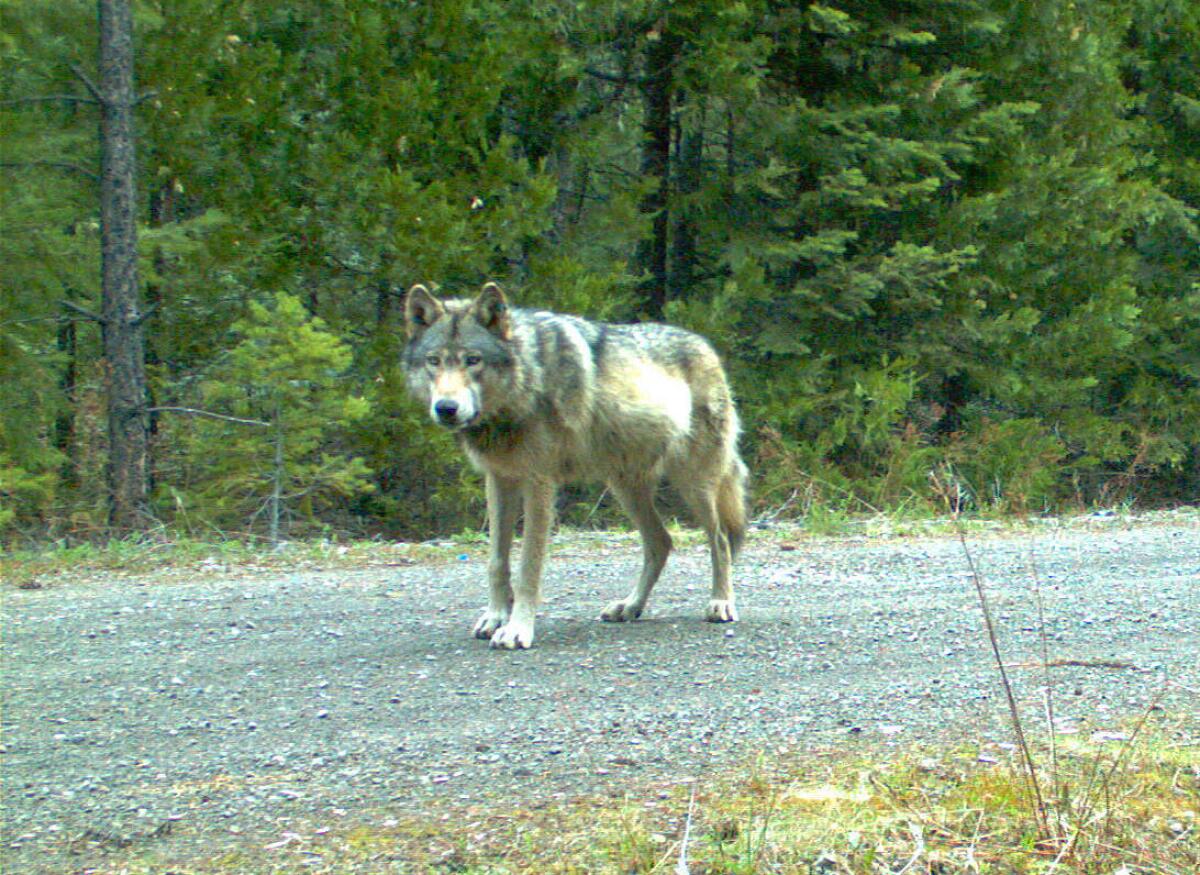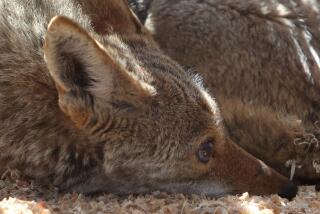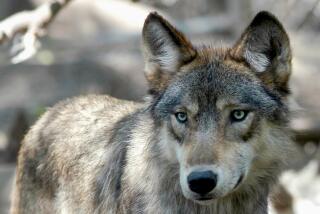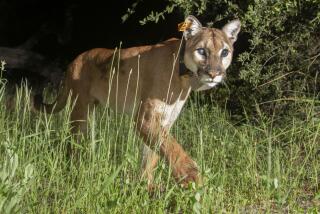GPS collar stops tracking wandering wolf OR7

This image of OR7 was captured by a remote camera in May 2014 in southwest Oregon’s Cascade Mountains.
The wolf OR7 became globally famous when he took off from his northeast Oregon pack four years ago and wandered thousands of miles in search of a mate, his movement tracked by a GPS satellite.
His actions will now be much harder to track.
Wildlife officials say the collar that transmitted his location through satellites and radio signals has stopped working.
“It all finally wore out,” said John Stephenson, Oregon wolf coordinator for the U.S. Fish and Wildlife Service in Bend. “The battery died, basically.”
Without the collar, biologists will rely on trail cameras and in-person sightings to monitor him, Stephenson said.
Knowing the electronics were close to blinking out, state and federal wildlife managers made three attempts to trap OR7 or another member of his so-called Rogue Pack, said Mark Vargas, district wildlife biologist for the Oregon Department of Fish and Wildlife in Medford.
The hope was to replace the batteries and keep the data coming from OR7 or to track the pack by collaring another one of the wolves.
“We’d love to get a collar back on OR7,” Vargas said, “but that didn’t happen.”
People around the world tracked OR7 when he set off from the Imnaha Pack four years ago, wandering through Oregon, into Northern California and back. He found a mate, settled in the Cascade Range in southern Oregon and has had five pups. None of the wolves in the pack has a working tracking collar.
Although not able to track OR7 as before, Stephenson and Vargas know where he and his pack roam. For the last three years, the wolf and his mate have hunted and raised pups around the Sky Lakes Wilderness Area between Prospect and Fort Klamath.
Now 6 years old, OR7 left his pack when he was 2. His three older pups, born last year, are full-sized yearlings and may soon set out on their own.
It “wouldn’t be surprising if one of them took off this fall,” Stephenson said.
More to Read
Start your day right
Sign up for Essential California for news, features and recommendations from the L.A. Times and beyond in your inbox six days a week.
You may occasionally receive promotional content from the Los Angeles Times.






